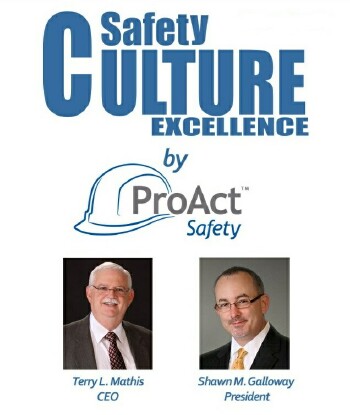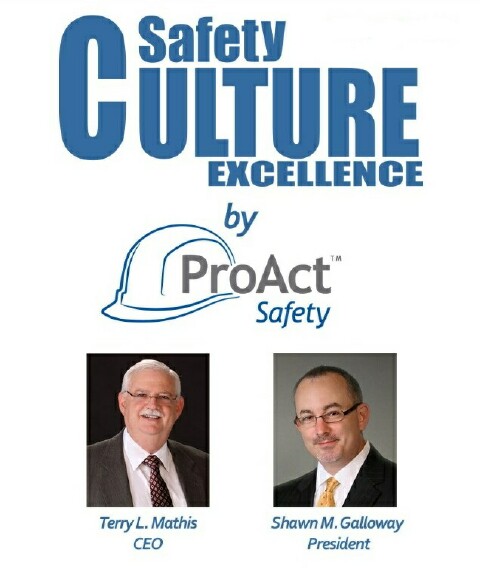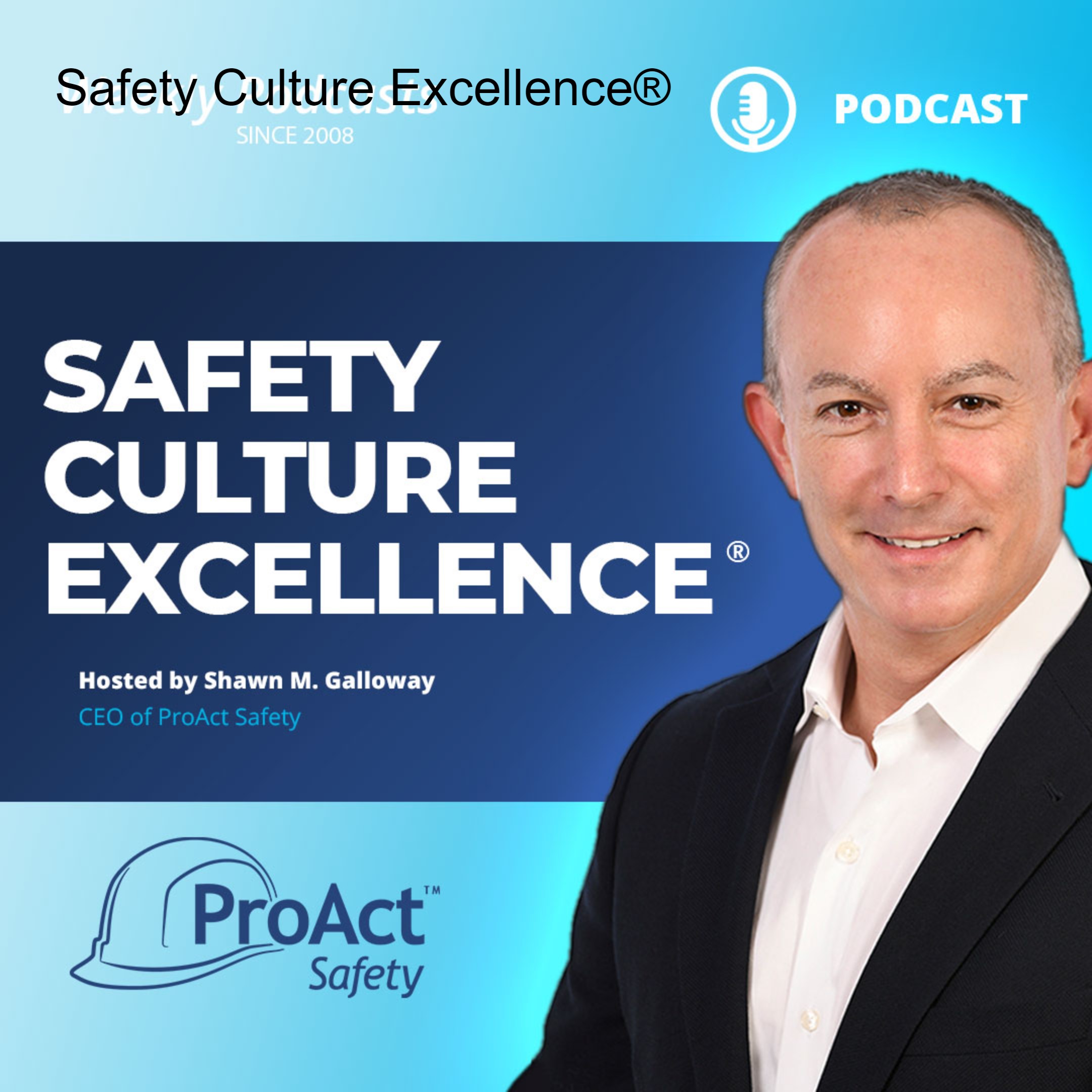Episodes

Monday Nov 24, 2014
363 - CEO: Indict or Invite in Safety?
Monday Nov 24, 2014
Monday Nov 24, 2014


Monday Nov 03, 2014
360 - How do you overcome change resistance?
Monday Nov 03, 2014
Monday Nov 03, 2014


Monday Sep 29, 2014
355 - The Pointlessness of Be Safe
Monday Sep 29, 2014
Monday Sep 29, 2014
Here is a short video to help you see how pointless it can be to tell someone to "be safe!"
Shawn M. Galloway
ProAct Safety
www.ProActSafety.com

Monday Jun 30, 2014
343 - What is Your Safety Elevator Pitch?
Monday Jun 30, 2014
Monday Jun 30, 2014
Greetings everyone, this podcast recorded while in my home in Texas. I’d like to share an article I wrote that was published May 2014 in Professional Safety Magazine. The published article can either be found on the magazine’s website or under Insights at www.ProActSafety.com.
I hope you enjoy the podcast this week. If you would like to download or play on demand our other podcasts, please visit the ProAct Safety’s podcast website at: http://www.safetycultureexcellence.com. If you would like access to archived podcasts (older than 90 days – dating back to January 2008) please visit www.ProActSafety.com/Store. For more detailed strategies to achieve and sustain excellence in performance and culture, pick up a copy of our book, STEPS to Safety Culture Excellence - http://proactsafety.com/insights/steps-to-safety-culture-excellence
Have a great week!
Shawn M. Galloway
ProAct Safety

Wednesday Jun 25, 2014
How Do You Define Production?
Wednesday Jun 25, 2014
Wednesday Jun 25, 2014
If you define production as products or services delivered and do not include safety in that definition, you are creating a dichotomy that will damage both production and safety. Production that injures those who produce it is most likely not the kind of production your organization wants. An accident (incident, injury – pick your preferred term) is a defect in your production process just as surely as a quality issue. If you develop a tolerance for poor quality or poor safety, you have developed a tolerance for poor production.
Organizations who achieve safety excellence do not make this distinction. They define production as safe and high quality products or services delivered. They manage safety and quality as a part of production rather than separate priorities. Workers who compromise any aspect of safety or quality have compromised production. The old ideas of production at any cost and sacrificing your body for the team are antiquated and counterproductive. If you still have these dichotomies in your organization, begin to improve by redefining what production is and what you expect from production workers.
-Terry L. Mathis
For more insights, visit www.ProActSafety.com
Terry L. Mathis is the founder and CEO of ProAct Safety, an international safety and performance excellence firm. He is known for his dynamic presentations in the fields of behavioral and cultural safety, leadership, and operational performance, and is a regular speaker at ASSE, NSC, and numerous company and industry conferences. EHS Today listed Terry as a Safety Guru in ‘The 50 People Who Most Influenced EHS in 2010, 2011 and 2012-2013. He has been a frequent contributor to industry magazines for over 15 years and is the coauthor of STEPS to Safety Culture Excellence, 2013, WILEY.

Wednesday Apr 23, 2014
Measuring STICK
Wednesday Apr 23, 2014
Wednesday Apr 23, 2014
The old wooden yardsticks with advertising on them were called “measuring sticks.” They were handy tools before the invention of tape measures and laser measuring devices. They had feet, inches and fractions of inches marked along the edge of the stick. You could hold them up to an item to see its length or height or stick it in liquid to see its depth.
Today, the word “stick” is used more and more to mean the retention of information. “Sticky” information is easily remembered. Remembered information is used in decision making and planning. In safety, we often attempt to communicate critical information that could potentially improve safety performance. We sometimes measure the amount or reach of this communication, but we seldom measure its “stick,” or retention. Information that is sent but forgotten does not improve safety.
So, how can we make safety information stickier and how can we measure the stick? Three easy steps to improve stickiness are to 1) start with the story, 2) stress the people and 3) tally all the numbers. For example, if you want to communicate an accident that occurred, tell the story of how it happened, stress how it impacted the people involved, and tally the number of similar accidents that could have been prevented by the same precaution that could have prevented this one. Periodically ask workers to recount recent accidents. Ask which precaution could have prevented the most accidents over the past several months or years. Measure the “stick” of your safety communication and constantly improve it.
-Terry L. Mathis
Terry L. Mathis is the founder and CEO of ProAct Safety, an international safety and performance excellence firm. He is known for his dynamic presentations in the fields of behavioral and cultural safety, leadership, and operational performance, and is a regular speaker at ASSE, NSC, and numerous company and industry conferences. EHS Today listed Terry as a Safety Guru in ‘The 50 People Who Most Influenced EHS in 2010, 2011 and 2012-2013. He has been a frequent contributor to industry magazines for over 15 years and is the coauthor of STEPS to Safety Culture Excellence, 2013, WILEY.

Monday Apr 21, 2014
338 – Creating a Culture of Have to or Want to?
Monday Apr 21, 2014
Monday Apr 21, 2014
Greetings everyone, this podcast recorded while in Clinton, IA. I’d like to share an article I wrote that was published April 2014 in BIC Magazine. The published article can either be found on the magazine’s website or under Insights at www.ProActSafety.com.
I hope you enjoy the podcast this week. If you would like to download or play on demand our other podcasts, please visit the ProAct Safety’s podcast website at: http://www.safetycultureexcellence.com. If you would like access to archived podcasts (older than 90 days – dating back to January 2008) please visit www.ProActSafety.com/Store. For more detailed strategies to achieve and sustain excellence in performance and culture, pick up a copy of our book, STEPS to Safety Culture Excellence - http://proactsafety.com/insights/steps-to-safety-culture-excellence
Have a great week!
Shawn M. Galloway
ProAct Safety

Wednesday Apr 16, 2014
The Confrontation Calamity
Wednesday Apr 16, 2014
Wednesday Apr 16, 2014
The emphasis on the concept of confrontation in safety is epidemic. Consultants, books and articles taut the virtue of teaching workers to confront each other over safety issues. They claim that the willingness and ability to confront may be the key competency of safety. They argue that it must become unacceptable to see a risk being taken and not confront the individual taking the risk.
The basis of this misguided concept goes back to two core misconceptions of safety thinking, (i.e. the idea that the goal of safety is to fail less and that all risk-taking is a matter of worker choice). When one worker sees another being bad there must be a confrontation to make the worker less bad. The worker taking a risk simply made a bad choice and confrontation will result in less-bad decisions in the future. The truth is that safety excellence is about achieving success, not simply avoiding failure and that there are organizational influences that impact workers’ decisions that need to be discovered and addressed if lasting change is to be made.
The alternative to the concept of confrontation is the concept of coaching. Coaching is a way to achieve success rather than simply avoid failure. It involves workers building on each other’s strengths rather than simply trying to correct their weaknesses. It is built upon a vision of success in which everyone helps each other reach a goal. It necessitates a vision of success and helps to identify organizational influences on workers’ behavioral choices.
Confrontation weakens relationships and culture and seldom results in lasting change. Coaching builds relationships and culture and almost always results in improved performance. Workers listen to their allies differently than they listen to their critics. Confrontation creates either enmity within the safety culture or avoidance behavior that has the appearance of confrontation without the reality. Either damages the very fabric of what it is supposed to improve.
-Terry L. Mathis
Terry L. Mathis is the founder and CEO of ProAct Safety, an international safety and performance excellence firm. He is known for his dynamic presentations in the fields of behavioral and cultural safety, leadership, and operational performance, and is a regular speaker at ASSE, NSC, and numerous company and industry conferences. EHS Today listed Terry as a Safety Guru in ‘The 50 People Who Most Influenced EHS in 2010, 2011 and 2012-2013. He has been a frequent contributor to industry magazines for over 15 years and is the coauthor of STEPS to Safety Culture Excellence, 2013, WILEY.

Monday Apr 14, 2014
337 – To Delegate or Not to Delegate Safety?
Monday Apr 14, 2014
Monday Apr 14, 2014
Greetings everyone, this podcast recorded while in Bangkok, Thailand. I’d like to share an article I wrote that was published April 2014 in OH&S Magazine. The published article can either be found on the magazine’s website or under Insights at www.ProActSafety.com.
I hope you enjoy the podcast this week. If you would like to download or play on demand our other podcasts, please visit the ProAct Safety’s podcast website at: http://www.safetycultureexcellence.com. If you would like access to archived podcasts (older than 90 days – dating back to January 2008) please visit www.ProActSafety.com/Store. For more detailed strategies to achieve and sustain excellence in performance and culture, pick up a copy of our book, STEPS to Safety Culture Excellence - http://proactsafety.com/insights/steps-to-safety-culture-excellence
Have a great week!
Shawn M. Galloway
ProAct Safety

Wednesday Apr 09, 2014
The Lost Art of Listening
Wednesday Apr 09, 2014
Wednesday Apr 09, 2014
The late Stephen Covey said that one of the habits of highly-effective people is to “Seek First to Understand, Then to Be Understood.” Most safety programs do exactly the opposite and are therefore not highly effective. Leaders and safety professionals decide what is needed and deploy new programs and processes without consulting the very people who know the issues in the field, and will ultimately determine the success or failure of new initiatives. Organizations regularly hire consultants to analyze their problems and the consultants get the information to do so directly from the organization’s employees. A good consultant is a good listener first and a good problem solver second.
But listening is more than just hearing sounds. It begins with setting the right tone for the conversation. There must be a non-threatening and respectful atmosphere in which the listening can take place. There also needs to be an honest and frank expectation of how the information will potentially be used. Skepticism often arises from past interviews or surveys from which no action has been taken. Enough of this kind of skepticism can render the conversation useless.
Sometimes, the right questions need to be asked to spark the right discussions and discover the underlying issues. When issues emerge from the discussions, they need to be probed and understood more fully. That means that the right questions need the right follow-up questions as well. The whole process can build upon itself once those interviewed realize that their input is being valued and can potentially lead to improvements. Listening is ultimately empowering people by taking them seriously.
-Terry L. Mathis
Terry L. Mathis is the founder and CEO of ProAct Safety, an international safety and performance excellence firm. He is known for his dynamic presentations in the fields of behavioral and cultural safety, leadership, and operational performance, and is a regular speaker at ASSE, NSC, and numerous company and industry conferences. EHS Today listed Terry as a Safety Guru in ‘The 50 People Who Most Influenced EHS in 2010, 2011 and 2012-2013. He has been a frequent contributor to industry magazines for over 15 years and is the coauthor of STEPS to Safety Culture Excellence, 2013, WILEY.

